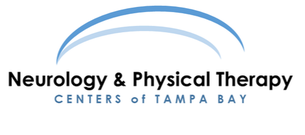Audiology and Vestibular Evaluations, Testing and TreatmentNeurology and Physical therapy Centers of Tampa Bay provides diagnostic audiological evaluations, central auditory processing testing, dizziness, vertigo and balance evaluations, as well as vestibular rehabilitation after a traumatic injury from a car accident, falling down, or objects that may have struck your head.
Some of the most common symptoms experienced following head or neck trauma and/or injury are dizziness, vertigo and tinnitus. Comprehensive evaluation of the audio-vestibular system may assist in diagnosing various disorders such as: benign paroxysmal positional vertigo (BPPV), labyrinthine concussion, utriculosaccular injuries, perilymphatic fistula, unilateral and bilateral vestibular loss, post concussive dizziness, noise induced hearing loss, conductive hearing loss, mixed hearing loss and possible processing disorder. What can I expect during my Visit?
Our Doctor of Audiology may perform one or more of the following tests during your appointment depending on your symptoms and complaints:
|
How is the testing administered?
You will be in a quiet room either sitting or lying down on a cushioned mat table for the hearing exam and vestibular evaluation. It is recommended that eye makeup be removed prior to testing. You will be asked to wear over the head headphones during the hearing test, and nerve assessments and a pair of goggles for the VNG testing.
What happens after the testing?
After the testing is completed, the audiologist will interpret the results of testing and exam with the ordering physician to develop a therapeutic care plan. A canal re-positioning maneuver may be used in the cases of BPPV, immediately following the testing. Depending on the diagnosis, therapy may include vestibular rehabilitation therapy.
What is vestibular rehabilitation therapy?
Vestibular rehabilitation therapy (VRT) is a specialized form of therapy incorporated to help alleviate difficulties that may be caused by vestibular disorders. It is a customized exercise-based program that is personalized for the patient's particular vestibular pathologies. VRT may include exercises that help reduce vertigo and dizziness, gaze instability , and/or imbalance and falls. Typically this is administered by a licensed physical therapist.
The Neurology and Physical Therapy Centers of Tampa Bay accepts all auto insurance for
for audiology testing for dizziness, balance, vertigo, hearing loss and tinnitus (ringing in the ears) from an injury.
Personal Injury Protection Insurance (PIP), Florida No Fault Insurance and Medical Pay Auto Coverage
Dizziness, Balance, Vertigo, Hearing and Tinnitus Testing in Tampa
Telephone 813-831-6622
2835 W. De Leon St.
Suite 205
Tampa, FL 33609
Telephone 813-831-6622
2835 W. De Leon St.
Suite 205
Tampa, FL 33609

